CSotD: Seven More Days in May
Skip to comments
“History is a nightmare from which I am trying to awake.” — Stephen Dedalus
As Doonesbury concluded back in 1971, putting Kent State into the memory hole allowed us to “concentrate on fresher, more recent, tragedies.”
But as Senators Hawley and Cotton call for the National Guard to be sent to quell campus protests, it’s worth remembering what happened that other time, and the mood of a nation that let it happen.

The factors that Herblock saw as leading up to the shootings seem to still be present today, as the nation remains divided, but with what seems a greater propensity for violence than existed in May, 1970.
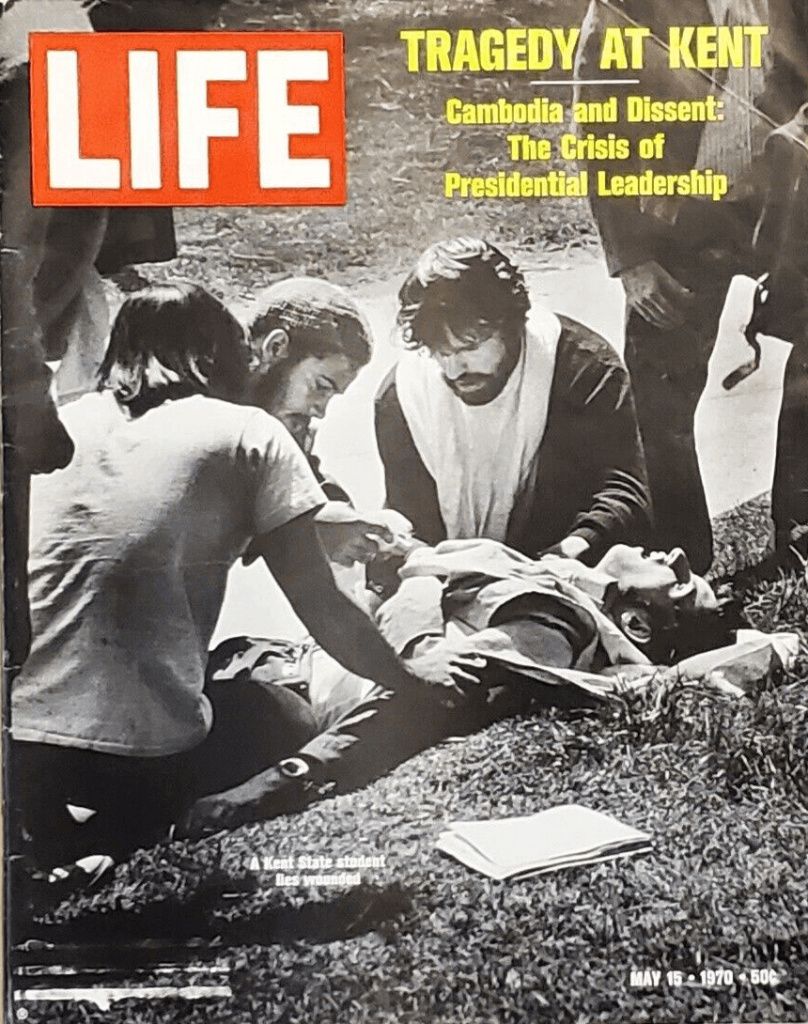
Seen through the lens of pop-culture history, the shootings at Kent State shocked the nation, and that was true, but it was hardly as universal as has since been portrayed.

A large part of the response involved false rumors, so that while the LA Times offered an editorial that awaited investigations, others assumed, as the below editorial from the Mount Vernon Argus does, that the Guard was assailed with rocks and may have acted in self-defense, though it notes that “Even for the guilty students, the punishment was grossly inordinate to the crime.”
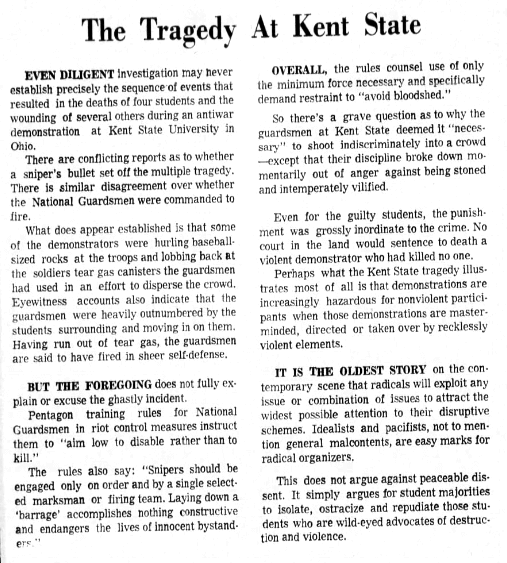
The hostility towards dissenters specifically and elites in general was more than a grassroots fad: Some of the bullets in Herblock’s box came from Spiro Agnew, Nixon’s voice of intentional division.
It worked then, as it’s working now.

Bill King of the Asbury Park Press blamed “college radicals” for destroying the colleges.

Copley Press Cartoonist Bob Stevens was more precise, blaming the students for the Kent State deaths, under a catch-all banner of anarchy.
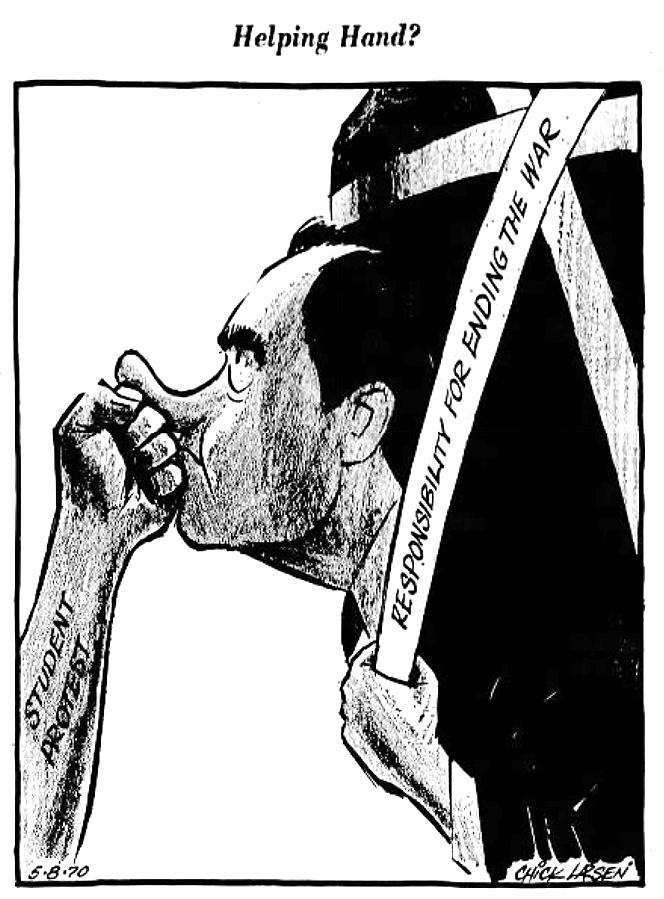
Chick Larsen took a middle-of-the-road stance, blaming student protesters for making it hard for Nixon to end the war, which, in all fairness, was several years before we discovered that Nixon had actually prolonged the conflict in order to unseat Lyndon Johnson.

There was horror in this divided country, and Paul Conrad cited the shootings as being parallel to the much-derided body counts with which the administration marked progress in Vietnam.
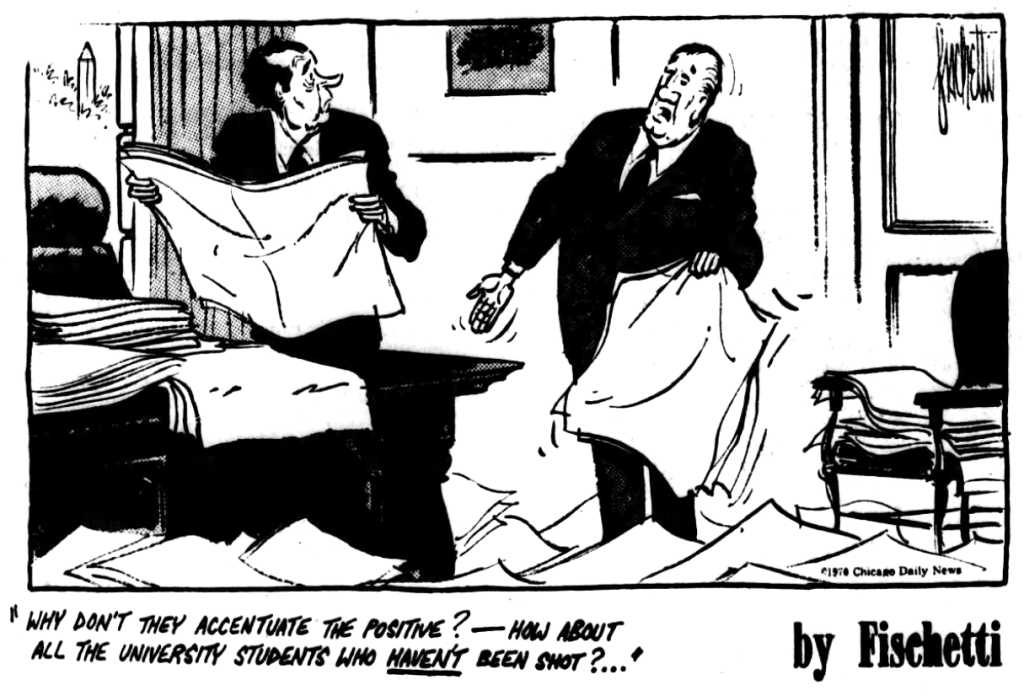
John Fischetti drew on that mainstream desire to let the president work without interference to highlight the dangers of trusting his administration.
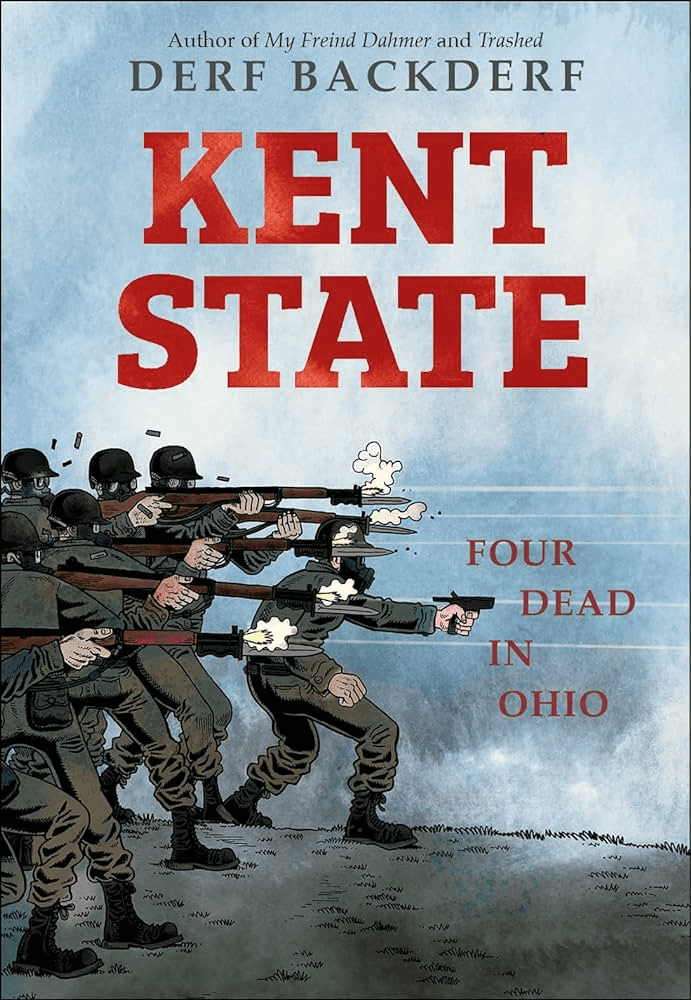
To understand what happened at Kent State, you can’t do better than to read Derf Backderf’s meticulously researched graphic non-fiction, which was reviewed here in 2019. It’s a substantial piece of history and, while a gripping piece of storytelling, comes with a bibliography and footnotes to back it all up.
And if you’d like to see more political cartoons on the topic, Derf’s got a collection on his blog, which is worth wandering around in.
Plus ca change
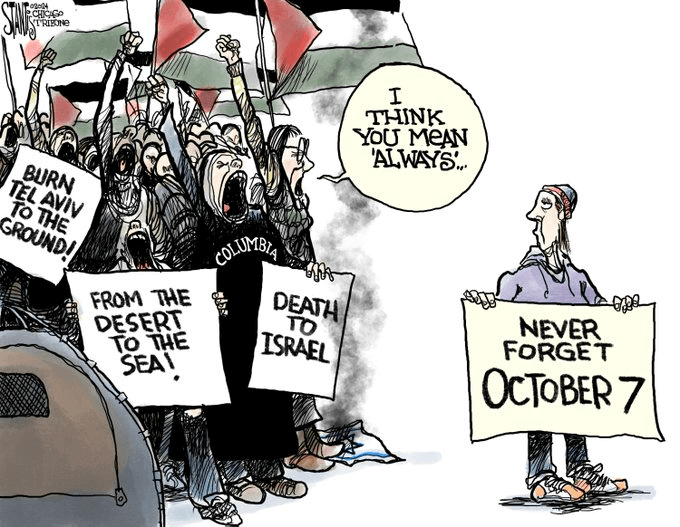
We seem to be back at Square One as cartoonists ponder the events at Columbia and other distant colleges.
Scott Stantis explains what is happening some 800 miles from Chicago, and, on social media, offers a link to a Chicago Tribune editorial which makes the connection between Kent State and Hawley and Cotton’s call for troops.

It seems jarring to see the four dead and nine wounded students blamed for their own shootings, but it’s a flashback to the days when the Trib blamed Fred Hampton for his death, leaving it up to their crosstown rival the Sun-Times to reveal that the alleged bullet holes from Panther guns were, in fact, nail heads in the wall.
The Chicago Tribune was never Fox News, but had a well-recognized talent for selective coverage.
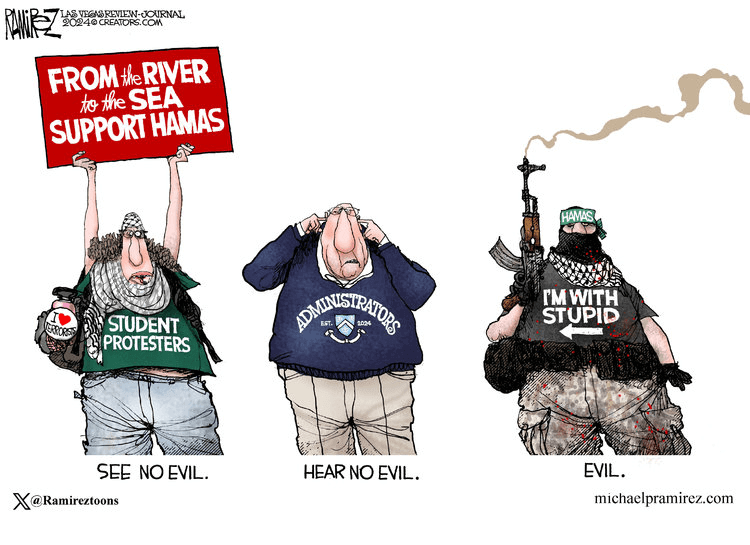
Michael Ramirez (Creators) is equally certain that demonstrators against Israel’s actions in Gaza are in league with Hamas, and that the college administrators on those campuses are purposely pretending not to know what’s happening in front of them.
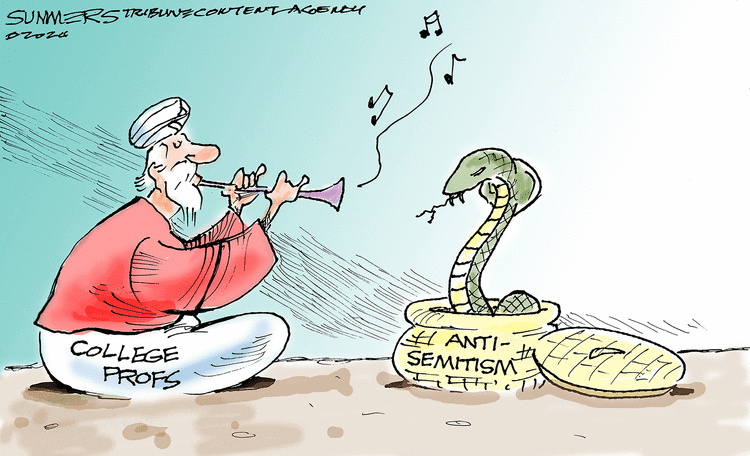
Dana Summers (Tribune) is more specific, explaining that college professors actively teach students to be antisemitic.
Which out-of-touch accusation reminds me of Okie from Muskogee in which Merle Haggard wrote “kids here still respect the college dean.” It left us scratching our heads, since the dean was a middle-manager you only saw if you needed him to rubberstamp a change in your class schedule.
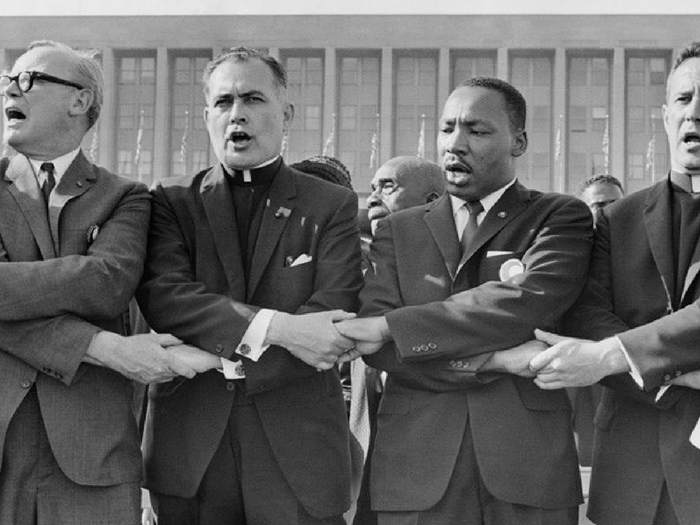
We respected the college president, but, for me, that was Father Hesburgh, who was wrongly lionized by rightwingers for having declared the “15 minute rule” stating that student protests must not disrupt university activities.
The outsiders didn’t get it. The rule was only invoked once, and largely by mistake, and, while a few campus radicals hated all authority, Father Ted was famously available to students who dropped by his office or ran into him on the quad.
And, in the wake of the Cambodian incursion and Kent State, he called for a withdrawal of troops from Southeast Asia.
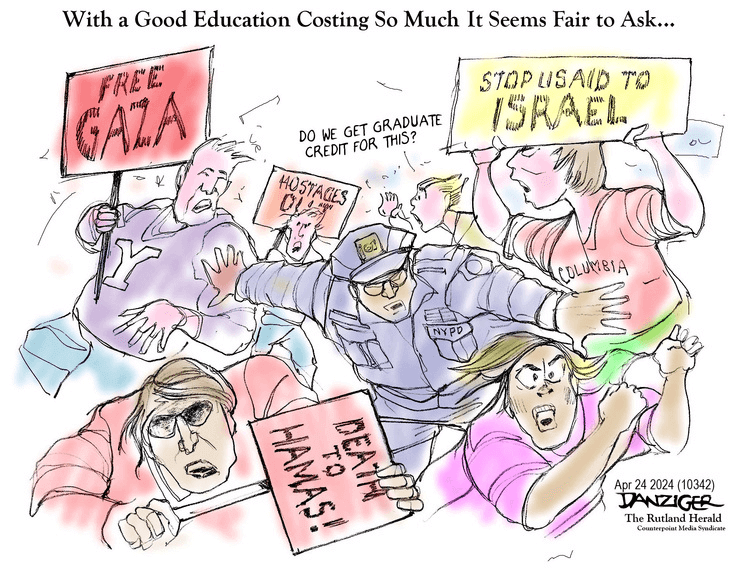
Jeff Danziger (Counterpoint) notes the chaos of clashing opinions, inserting a NYPD cop in the middle of students with a variety of causes, but, while criticizing the distraction, he wisely stops short of judging one side or the other.
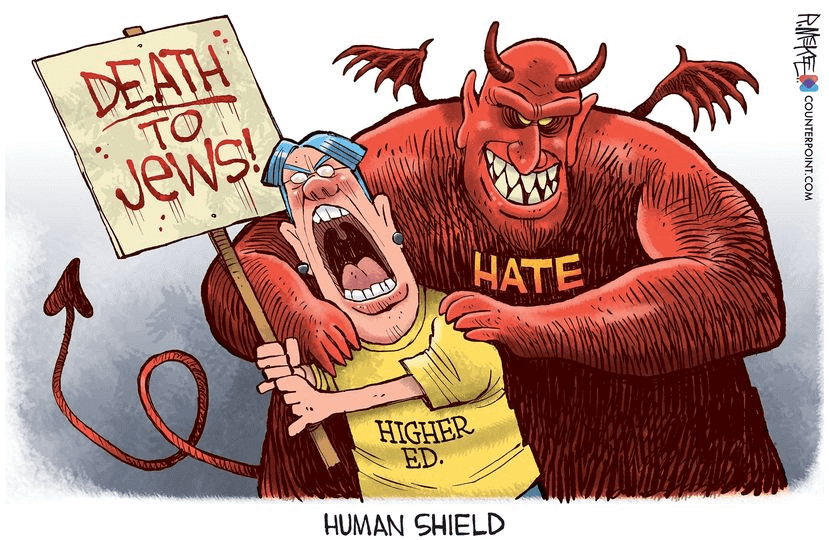
There is a reasonable question in how much of a distraction the protests have been, but with classes canceled or on-line, the real question becomes whether the threats are equal to the fears.
Rick McKee (Counterpoint) claims students are calling for death to Jews, but reports from the campuses themselves state that what outrageous antisemitism happens has been isolated and mostly involved outsiders on nearby streets, not on the campuses.
I guess you had to be there which is a pretty good rule for understanding what happened both in 1970 and what’s happening on campuses today.
Those closer to the ground — from blogger Parker Malloy to the Poynter Institute — recommend reading students’ own coverage of the colleges, at least alongside if not instead of the reports from those who drop by campuses briefly or opine from afar.
The Atlantic sent a writer to visit Columbia and see what’s happening there, but it’s behind their paywall. For the rest of us, here’s another close-up view from Tom Scocca, who came away puzzled by the hawks and haters:
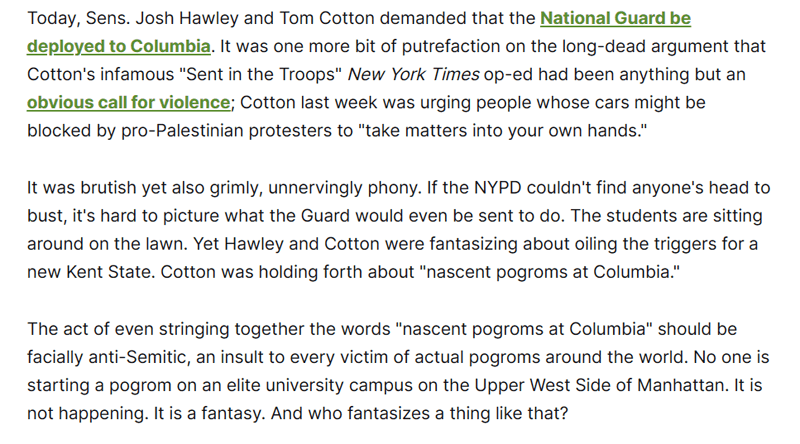
There are questions to be asked, including whether college administrators have fallen down on the job or whether this is just an escalation of attacks on the elite?
And do students see a difference between living with Biden despite his Gaza policy and life in a second Trump presidency?
And why are we still asking the same questions?
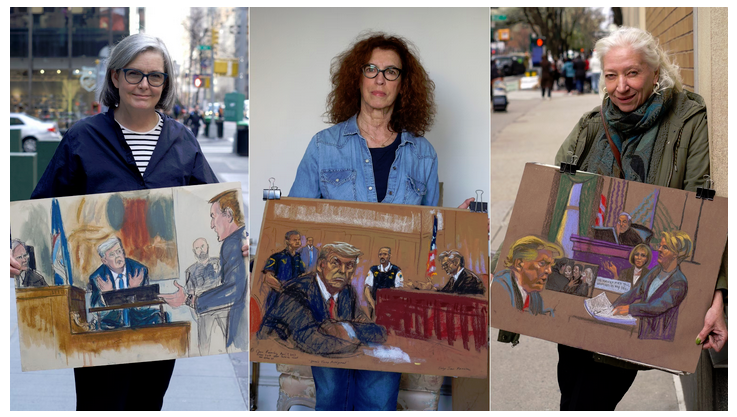
Comments 14
Comments are closed.